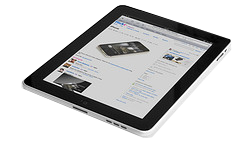 |
|
William Gibson, talking about Zero History. Photo by Steve Rhodes. |
I just finished the third book of a trilogy by William Gibson, who coined the term cyberspace in his 1984 landmark work, Neuromancer. The “Bigend Books” include Pattern Recognition, Spook County, and Zero History and they each involve a collection of
The reading starts out difficult for me, because Gibson has such a seemingly cryptic way of writing. But after about 70 pages or so, it becomes amazingly descriptive — once you realize the odd angle at which the characters approach things. Since my brain seems temporarily aligned that way, I’m going back and re-reading the first two books.
In Zero History, Bigend is asked what he wants more than anything else. He replies, almost instantly, “The Order flow,” the total aggregation of all orders for all products and services worldwide and in real time. With this, he could predict the future, he says.
I woke up early this morning with this swimming around in my head, as well as the louder than usual hoots from our neighborhood owl. It was an information flow (unrelated to “information theory”) that came to mind, the current of all the information, the data and the conversations, that define our world at any given time. Of course there is no way to capture all of that (except in some NSA bunker). But in thinking about a recent post if mine, comparing students to learners, it seems difficult (to impossible) to be a learner in a learning environment that virtually ignores the information flow.
We teach in closed environments, from stale textbooks, and too often we seem more focused on what we can block with our networks than what we can light up our classrooms with. Our curriculum is paced and pixelated, and based on pedagogies that may well be increasingly irrelevant to today’s learners.
Tomorrow, I will be doing a session at TechForum (Atlanta) on supporting and promoting “learning” culture in our schools. It’s supposed to be about PLNs, but I’m not sure that personal learning networks can be, or should be promoted at the school or district level. However learning culture can lead to teachers who are engaged in personal learning adventures.
The session will be largely conversational with me hanging back as much as possible, and I’m hoping that this idea of schools that capture the information flow will be part of the theme.

